Swollen Lymph Nodes Above Breast: Understanding Breast Cancer and Lymph Node Status
What is lymph node status in breast cancer. How does it affect prognosis and treatment. What are the different categories of lymph node status. How is sentinel node biopsy performed. What are the implications of lymph node-positive and lymph node-negative results.
The Importance of Lymph Node Status in Breast Cancer
Lymph node status is a crucial factor in understanding the progression and prognosis of breast cancer. It indicates whether cancer cells have spread beyond the primary tumor site to the lymph nodes, particularly those in the underarm area (axillary lymph nodes). This information plays a vital role in determining the stage of breast cancer and guiding treatment decisions.
There are two main classifications of lymph node status:
- Lymph node-negative: No cancer cells are found in the axillary lymph nodes
- Lymph node-positive: At least one axillary lymph node contains cancer cells
The presence or absence of cancer in the lymph nodes significantly impacts a patient’s prognosis. Generally, lymph node-negative breast cancer has a better prognosis than lymph node-positive cases. Moreover, the number of affected lymph nodes correlates with the overall prognosis – the more lymph nodes containing cancer, the poorer the outlook tends to be.

Methods of Assessing Lymph Node Status
There are two primary methods used to evaluate lymph node status in breast cancer patients:
1. Pathologic Lymph Node Status
Pathologic lymph node status is considered the most accurate method of assessment. It involves a microscopic examination of lymph node tissue by a pathologist. The process typically begins with a surgical procedure called sentinel node biopsy, where one or more axillary lymph nodes are removed for examination.
2. Clinical Lymph Node Status
Clinical lymph node status is determined through a physical examination. While less precise than pathologic assessment, it can provide an initial estimate of lymph node involvement. Enlarged nodes detected during a clinical exam may indicate the spread of breast cancer to the lymph nodes.
Clinical lymph node status is primarily used when pathologic findings are not available.
Understanding Lymph Node Status Categories
Lymph node status is categorized using a standardized system that helps healthcare providers communicate effectively about a patient’s condition. The categories are as follows:

- NX: Lymph nodes cannot be assessed
- N0: No cancer in lymph nodes or only isolated tumor cells present
- N1: Micrometastases or 1-3 axillary lymph nodes with cancer
- N2: 4-9 axillary lymph nodes with cancer or internal mammary nodes with cancer
- N3: 10 or more axillary lymph nodes with cancer, or cancer in infraclavicular or supraclavicular nodes
These categories apply to both pathologic and clinical lymph node status, although the specific criteria may vary slightly between the two assessment methods.
The Role of Sentinel Node Biopsy in Breast Cancer
Sentinel node biopsy is a crucial procedure in assessing lymph node status for breast cancer patients. This minimally invasive technique allows surgeons to identify and remove the first lymph nodes where cancer is likely to spread.
How is sentinel node biopsy performed?
The procedure involves the following steps:
- Injection of a radioactive tracer or blue dye into the breast tissue
- Identification of the sentinel nodes that absorb the tracer or dye
- Surgical removal of the sentinel nodes
- Pathological examination of the removed nodes
Typically, 1-5 nodes are identified as sentinel nodes and removed for analysis. It’s important to note that the removal of sentinel nodes does not necessarily indicate the presence of cancer; it simply means these nodes require further examination.
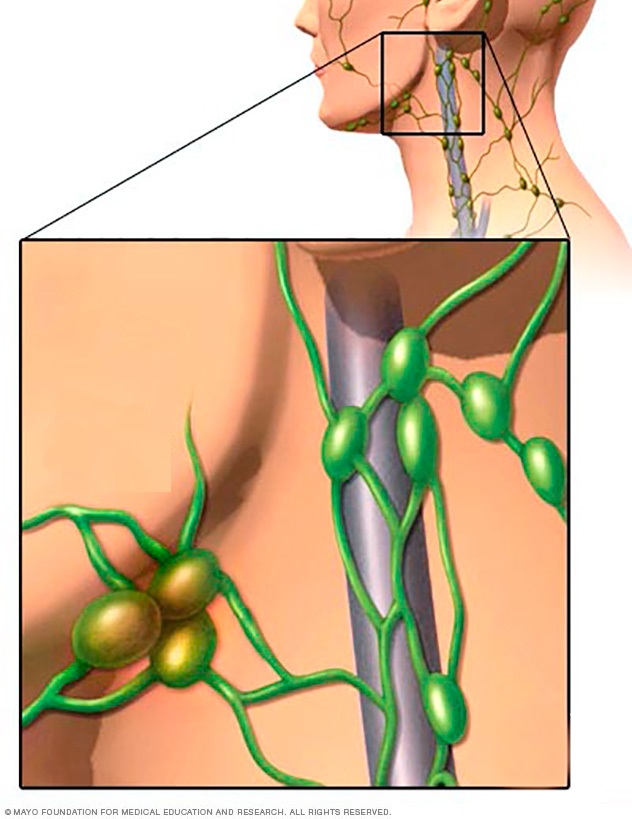
Implications of Sentinel Node Biopsy Results
The findings from a sentinel node biopsy have significant implications for breast cancer patients:
Lymph Node-Negative Results
When sentinel nodes are found to be free of cancer cells, it’s referred to as a lymph node-negative result. This outcome suggests that it’s unlikely for other lymph nodes to contain cancer, eliminating the need for further lymph node surgery.
Lymph Node-Positive Results
A lymph node-positive result indicates the presence of cancer cells in at least one sentinel node. In such cases, additional lymph nodes may need to be removed through a procedure called axillary dissection. This helps determine the extent of lymph node involvement and guides further treatment decisions.
The Impact of Lymph Node Status on Treatment Decisions
Lymph node status plays a crucial role in shaping the treatment plan for breast cancer patients. Here’s how it influences various aspects of care:
Surgery
For patients with lymph node-positive results, more extensive surgery may be recommended. This could include axillary lymph node dissection, where additional lymph nodes are removed to assess the extent of cancer spread.

Radiation Therapy
Lymph node status helps determine the need for and extent of radiation therapy. Patients with positive lymph nodes may require more comprehensive radiation treatment, potentially including the chest wall and regional lymph nodes.
Systemic Therapy
The presence of cancer in lymph nodes often indicates a higher risk of recurrence. As a result, patients with lymph node-positive breast cancer are more likely to be recommended systemic therapies such as chemotherapy, targeted therapy, or hormonal therapy to reduce the risk of cancer spread.
Advances in Lymph Node Assessment and Treatment
Recent years have seen significant advancements in the assessment and treatment of lymph node involvement in breast cancer:
1. Molecular Testing
Molecular tests can now detect tiny amounts of cancer cells in lymph nodes that might be missed by standard pathology. This allows for more accurate staging and treatment planning.
2. Less Invasive Techniques
Researchers are exploring less invasive alternatives to axillary lymph node dissection for some patients with limited lymph node involvement. These techniques aim to reduce the risk of complications associated with more extensive surgery.

3. Targeted Therapies
New targeted therapies are being developed to specifically address breast cancer that has spread to lymph nodes, potentially improving outcomes for patients with lymph node-positive disease.
Living with Lymph Node-Positive Breast Cancer
A diagnosis of lymph node-positive breast cancer can be challenging, but it’s important to remember that treatment options have greatly improved in recent years. Here are some key points for patients to consider:
- Follow-up care: Regular follow-up appointments and imaging studies are crucial for monitoring for potential recurrence or spread of cancer.
- Lymphedema awareness: Patients who have undergone axillary lymph node dissection should be aware of the risk of lymphedema and learn about prevention strategies.
- Support resources: Numerous support groups and resources are available for patients dealing with lymph node-positive breast cancer, offering emotional support and practical advice.
- Lifestyle modifications: Adopting a healthy lifestyle, including regular exercise and a balanced diet, can support overall health and potentially reduce the risk of recurrence.
While lymph node-positive breast cancer may require more intensive treatment, many patients achieve successful outcomes and go on to lead fulfilling lives after treatment.
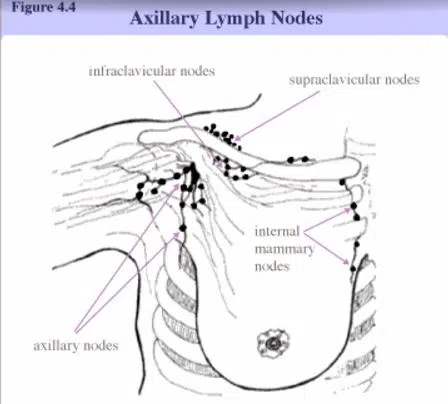
Future Directions in Lymph Node Assessment and Treatment
The field of breast cancer research continues to evolve, with ongoing studies aimed at improving lymph node assessment and treatment strategies. Some promising areas of research include:
1. Liquid Biopsies
Researchers are exploring the use of blood tests to detect cancer cells or DNA in the bloodstream, potentially offering a less invasive method of assessing cancer spread.
2. Immunotherapy
Emerging immunotherapy treatments show potential in treating breast cancer that has spread to lymph nodes by harnessing the body’s immune system to fight cancer cells.
3. Personalized Medicine
Advances in genomic profiling are paving the way for more personalized treatment approaches, tailoring therapies to the specific characteristics of each patient’s cancer.
4. De-escalation Studies
Ongoing research is investigating whether some patients with limited lymph node involvement can safely receive less aggressive treatments without compromising outcomes.
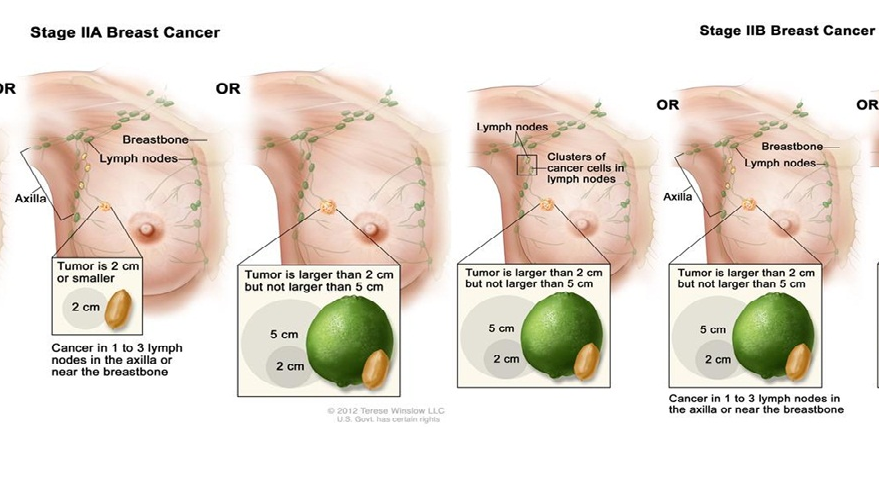
These advancements offer hope for improved outcomes and quality of life for breast cancer patients, particularly those dealing with lymph node-positive disease. As research progresses, it’s likely that lymph node assessment and treatment strategies will become increasingly precise and effective, further improving the prognosis for breast cancer patients.
Breast Cancer &Lymph Node Status
Lymph node status shows whether or not the lymph nodes in the underarm area (axillary lymph nodes) contain cancer:
- Lymph node-negative means none of the axillary lymph nodes contain cancer.
- Lymph node-positive means at least one axillary lymph node contains cancer.
Prognosis (chance of survival) is better when cancer has not spread to the lymph nodes (lymph node-negative) [12].
The more lymph nodes that contain cancer, the poorer prognosis tends to be [12].
The number of positive nodes guides treatment and helps predict prognosis.
See Figure 4.4 below for a drawing of the breast and lymph nodes.
Learn more about lymph node status.
Pathologic lymph node status
A pathology exam is the best way to assess lymph node status. This is called pathologic lymph node status.
Usually, a surgeon removes one or more axillary lymph nodes with a technique called sentinel node biopsy. A pathologist studies these nodes under a microscope to see if they contain cancer.
A pathologist studies these nodes under a microscope to see if they contain cancer.
These results help determine breast cancer stage and guide treatment.
Learn more about sentinel node biopsy and assessing lymph nodes.
Clinical lymph node status
A physical exam (also called a clinical exam) can give a first estimate of lymph node status. This is called clinical lymph node status. Enlarged nodes can be a sign the breast cancer has spread to the nodes.
Clinical lymph node status is only used when pathologic findings aren’t available.
Lymph node status categories
See Figure 4.4 for a drawing of the breast and lymph nodes.
Pathologic lymph node status | Clinical lymph node status | |
NX | Axillary and other nearby lymph nodes cannot be assessed (for example, they were not removed during surgery) | Axillary and other nearby lymph nodes cannot be assessed (for example, they were removed in the past) |
N0 | Axillary and other nearby lymph nodes don’t have cancer or only have isolated tumor cells (individual cancer cells), when looked at under a microscope | Axillary and other nearby lymph nodes don’t have cancer |
N1 | Micrometastases (very small clusters of cancer cells) OR 1–3 axillary lymph nodes have cancer AND/OR Internal mammary nodes have cancer or micrometastases found on sentinel node biopsy | Axillary lymph nodes have cancer, but can be moved around |
N2 | 4–9 axillary lymph nodes have cancer OR Internal mammary nodes have cancer, but axillary lymph nodes don’t have cancer | Axillary lymph nodes have cancer and are matted together or fixed to other structures (such as the chest wall) OR Internal mammary nodes have cancer, but axillary lymph nodes don’t appear to have cancer |
N3 | 10 or more axillary lymph nodes have cancer OR Infraclavicular (under the clavicle) nodes have cancer OR Internal mammary nodes have cancer plus 1 or more axillary lymph nodes have cancer OR 4 or more axillary lymph nodes have cancer plus internal mammary nodes have cancer or micrometastases (very small clusters of cancer cells) found on sentinel node biopsy OR Supraclavicular (above the clavicle) nodes have cancer | Infraclavicular (under the clavicle) nodes have cancer (axillary lymph nodes may or may not have cancer) OR Internal mammary nodes and axillary lymph nodes have cancer OR Supraclavicular (above the clavicle) nodes have cancer (axillary lymph nodes may or may not have cancer) |
Adapted from American Joint Committee on Cancer materials [30]. | ||
Updated 12/20/22
Sentinel Node Biopsy and Axillary Dissection
Sentinel node biopsy
To check if cancer has spread to the axillary lymph nodes, most people have a procedure called sentinel node biopsy during breast surgery.
Before or during this procedure, a radioactive substance (called a tracer) and/or a blue dye is injected into the breast.
The first axillary lymph nodes to absorb the tracer or dye are called the sentinel nodes. These are also the first lymph nodes where breast cancer is likely to spread.
The surgeon locates the sentinel nodes by looking for the lymph nodes that have absorbed the tracer (using a special device called a gamma probe) or the dye (which turns the lymph nodes blue).
The radioactive tracer or blue dye usually identifies 1-5 nodes as the sentinel nodes. The surgeon removes the sentinel nodes and sends them to a pathologist.
If the surgeon removes sentinel nodes, it doesn’t mean there’s cancer in the nodes. It just means a pathologist needs to check the nodes for cancer.
It just means a pathologist needs to check the nodes for cancer.
Findings from a sentinel node biopsy
Lymph node status shows whether or not breast cancer has spread to the axillary lymph nodes.
- Lymph node-negative means none of the sentinel nodes contain cancer. So, it’s unlikely other lymph nodes have cancer. Surgery to remove more lymph nodes won’t be needed.
- Lymph node-positive means at least one sentinel node contains cancer. More lymph nodes may be removed with a procedure called axillary dissection. The goals of axillary dissection are to check how many lymph nodes have cancer and to reduce the chances of cancer returning in the lymph nodes.
When is axillary dissection needed?
Some women with 1-2 positive sentinel nodes who have a lumpectomy and will have whole breast radiation therapy may not need axillary dissection [14]. (Whole breast radiation therapy treats part of the underarm area as well as the breast. )
)
Most people with one or more positive sentinel nodes who have a mastectomy will need an axillary dissection or radiation therapy to the axillary lymph nodes [14].
If you have a positive sentinel lymph node, talk with your health care team about whether you need an axillary dissection.
Pathology techniques
The most common way to assess pathologic lymph node status is a lab test called H&E staining.
In the past, a lab test called immunohistochemistry (IHC) was sometimes used to assess lymph node status. However, studies showed the small deposits of tumor cells identified by IHC were not useful in prognosis [15-16]. IHC is only recommended for assessing lymph node status when the results of H&E staining are uncertain and sometimes, after neoadjuvant therapy [14].
Axillary dissection, sentinel node biopsy and risk of lymphedema
Axillary dissection removes more axillary lymph nodes than a sentinel node biopsy does. Because it disrupts more of the normal tissue in the underarm area, axillary dissection is more likely to affect arm function and cause lymphedema.
For this reason, sentinel node biopsy is the preferred first step to check the axillary lymph nodes.
Who cannot have a sentinel node biopsy?
In some cases, a sentinel node biopsy is not advised, and an axillary dissection is done instead.
This most often occurs when:
- A person can’t have a sentinel node biopsy (for example, an axillary dissection has been done in the past)
- The sentinel node(s) can’t be found
- The axillary lymph nodes are already known to contain cancer (for example, before surgery, a health care provider felt suspicious lymph nodes and a needle biopsy showed they contained cancer)
Learn more about axillary lymph nodes.
Learn about lymph node status and breast cancer stage.
Swollen lymph nodes – the causes of occurrence, in what diseases it occurs, diagnosis and methods of treatment
Measles
Rubella
Diphtheria
Chicken pox
Syphilis
Thyrotoxicosis
HIV
14165
14 August
Enlargement of lymph nodes – the causes of the appearance, in which diseases it occurs, diagnosis and methods of treatment.
Lymph nodes are small biological filters related to the lymphatic system. Their main function is to protect the body. Lymph nodes allow the flow of lymph through themselves and in their structures trap pathogens that are destroyed by protective cells – lymphocytes.
Under the sight of the lymph nodes are bacteria, tumor cells and toxic substances.
What are lymph nodes? These are small accumulations of lymphoid tissue located on the connective tissue frame.
Lymphoid tissue is a pool of cells that are involved in the destruction of damaged and tumor cells and microorganisms.
Swollen lymph nodes can be a symptom of both a mild infectious disease and a serious pathology that can lead to a severe outcome. Therefore, in all cases of enlarged lymph nodes, you should consult a doctor to diagnose and find out the cause.
Classification
Depending on the localization, the following groups of lymph nodes are distinguished:
- occipital;
- cervical;
- submandibular;
- chin;
- supraclavicular and subclavian;
- axillary;
- elbow;
- inguinal;
- popliteal.

During the examination, the doctor palpates (feels) the lymph nodes and determines their size, structure, soreness, skin changes over the lymph node.
Causes of swollen lymph nodes
An increase in lymph nodes indicates a pathological process. An isolated enlargement of the lymph node, or generalized lymphadenopathy, directly depends on the underlying cause of the disease.
Most cases of enlarged lymph nodes are temporary.
The reasons for the enlargement of the lymph nodes are:
- infectious processes;
- autoimmune diseases;
- tumor pathologies;
- storage diseases (a group of diseases accompanied by metabolic disorders).
Lymph nodes are involved in the formation of immunity, and with any infectious process, cell division is activated in them, protecting the body.
So, with brucellosis, tuberculosis, syphilis, diphtheria, bacteria can settle in the lymph nodes, causing inflammation. In this case, the lymph nodes increase in size due to the increased flow of lymph and blood.
In this case, the lymph nodes increase in size due to the increased flow of lymph and blood.
Most often, lymph nodes enlarge with acute infections of the upper respiratory tract. Among them, the lymph nodes acquire the largest size with tonsillitis (tonsillitis).
Painful swollen lymph nodes can be a sign cat scratch disease (from the name it is clear that the disease occurs in persons scratched by a cat). The cause of the inflammatory process is the bacterium Bartonella henselae.
One of the clearest examples of a viral disease accompanied by a significant increase in lymph nodes is infectious mononucleosis . The disease is caused by the Epstein-Barr virus and cytomegalovirus.
Infectious mononucleosis is more common in children and young adults. In addition to an increase in lymph nodes, it is characterized by an increase in body temperature, weakness and sore throat.
In children, generalized lymphadenopathy occurs with childhood infectious diseases , such as measles, rubella, parotitis, chicken pox.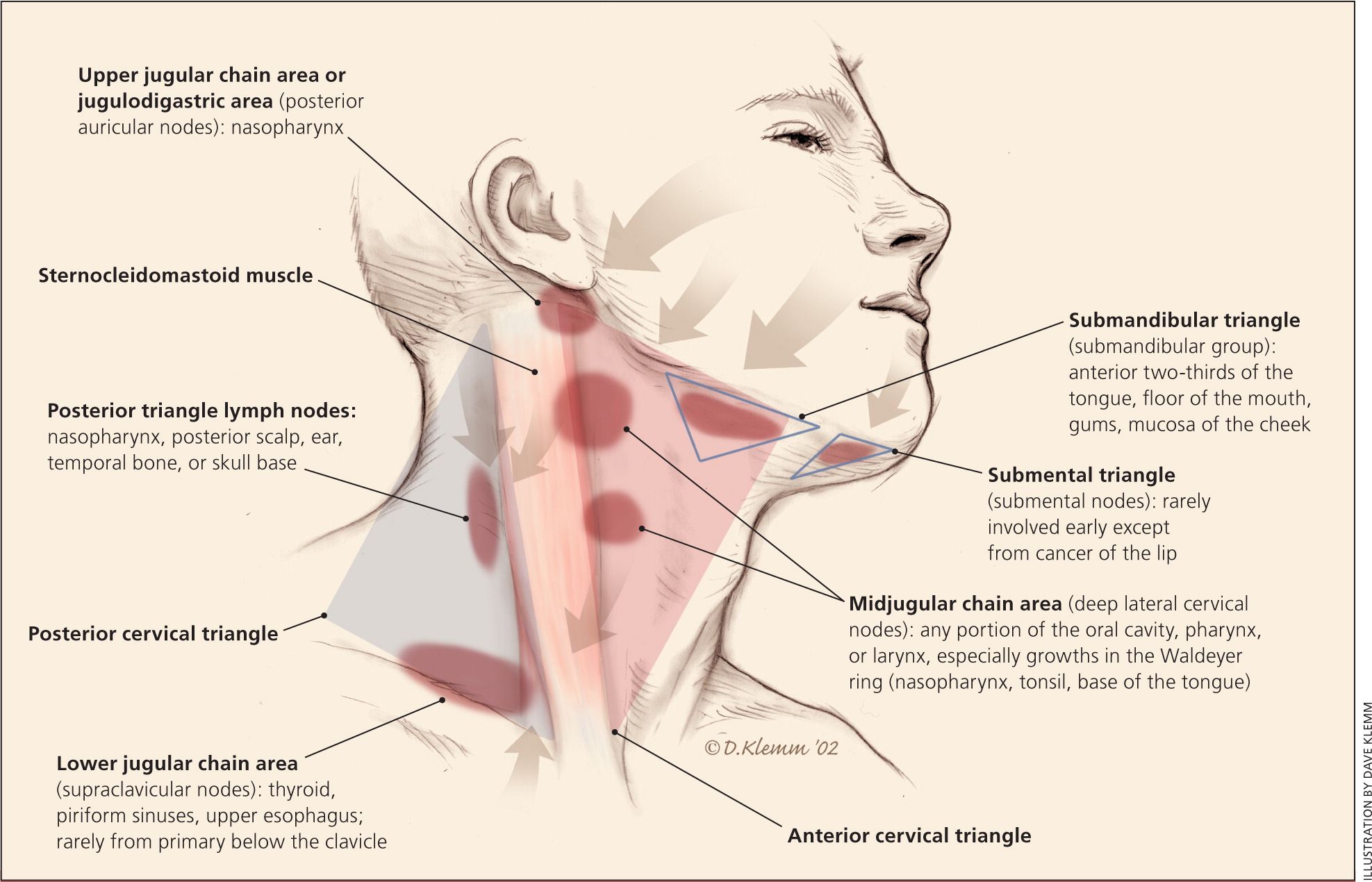
Among other viral diseases accompanied by lymphadenopathy, it is worth noting HIV infection .
Lymphadenopathy in HIV infection is accompanied by a number of symptoms: weight loss, unexplained fever, night sweats, fatigue, and later infectious diseases (herpes, cytomegalovirus infection, candidiasis).
Systemic (autoimmune) connective tissue diseases such as rheumatoid arthritis, systemic lupus erythematosus may be accompanied by enlarged lymph nodes. Under these conditions, there is a violation of the recognition of “foreign” and “own” proteins, as a result of which the body begins to attack its own cells. If the process is active, then the lymph nodes increase in size due to the increasing load.
Often, autoimmune diseases are accompanied by an enlarged spleen and additional symptoms.
With systemic lupus erythematosus, the skin, kidneys and serous membranes of internal organs are affected (lupus pleurisy, serositis occur). In rheumatoid arthritis, articular cartilage is predominantly affected.
In rheumatoid arthritis, articular cartilage is predominantly affected.
Swollen lymph nodes may be a symptom of the progression of the tumor process in the body. Atypical (tumor) cells migrate to the lymph nodes, get stuck in them, multiply and stretch the node with their mass.
Separately, it is worth highlighting a group of malignant neoplasms that directly affect the lymphatic system.
- Hodgkin’s lymphoma , or lymphogranulomatosis occurs with the formation of conglomerates of affected immature lymphocytes in the lymph nodes and spleen.
- Non-Hodgkin’s lymphomas – a group of lymphoproliferative diseases.
Swollen lymph nodes can be a symptom accumulation diseases : some substance accumulates in organs and tissues, including lymph nodes, as a result of metabolic disorders. Among these diseases: hemochromatosis (iron accumulation), Wilson-Konovalov disease (copper accumulation) and other hereditary metabolic disorders.
Allergic reactions sometimes lead to enlarged lymph nodes. Hypersensitivity to certain drugs leads to generalized lymphadenopathy.
Among endocrinological diseases , hyperthyroidism may be characterized by lymphadenopathy, enlargement of the spleen and an increase in the content of lymphocytes in the blood. With treatment, all indicators return to normal.
It is worth remembering that all the lymph flowing from the organs passes through the lymph nodes, and if a person is engaged in heavy physical labor, then the elbow and popliteal lymph nodes can be enlarged due to a heavy load .
Also, lymph nodes in rare cases increase after vaccination with on the respective side.
Which doctors should I contact for swollen lymph nodes?
The adult should contact
general practitioner
, and examines the child and adolescent
pediatrician
. Depending on associated symptoms, the following specialists may need to be consulted:
Depending on associated symptoms, the following specialists may need to be consulted:
- oncologist;
- surgeon;
- phthisiatrician;
- infectious diseases doctor;
- endocrinologist;
- rheumatologist.
Diagnosis and examination of swollen lymph nodes
- CBC;
Treatment of enlarged lymph nodes
In most cases, lymphadenopathy resolves on its own and does not require specific treatment.
If the lymph nodes increase rapidly, are painful to the touch, the process is accompanied by other symptoms, including fever and weakness, you should consult a specialist.
The doctor will conduct the necessary examination and determine a set of therapeutic measures.
In case of bacterial inflammation, antibiotic therapy and the necessary symptomatic treatment (antipyretic and anti-inflammatory drugs) will be prescribed.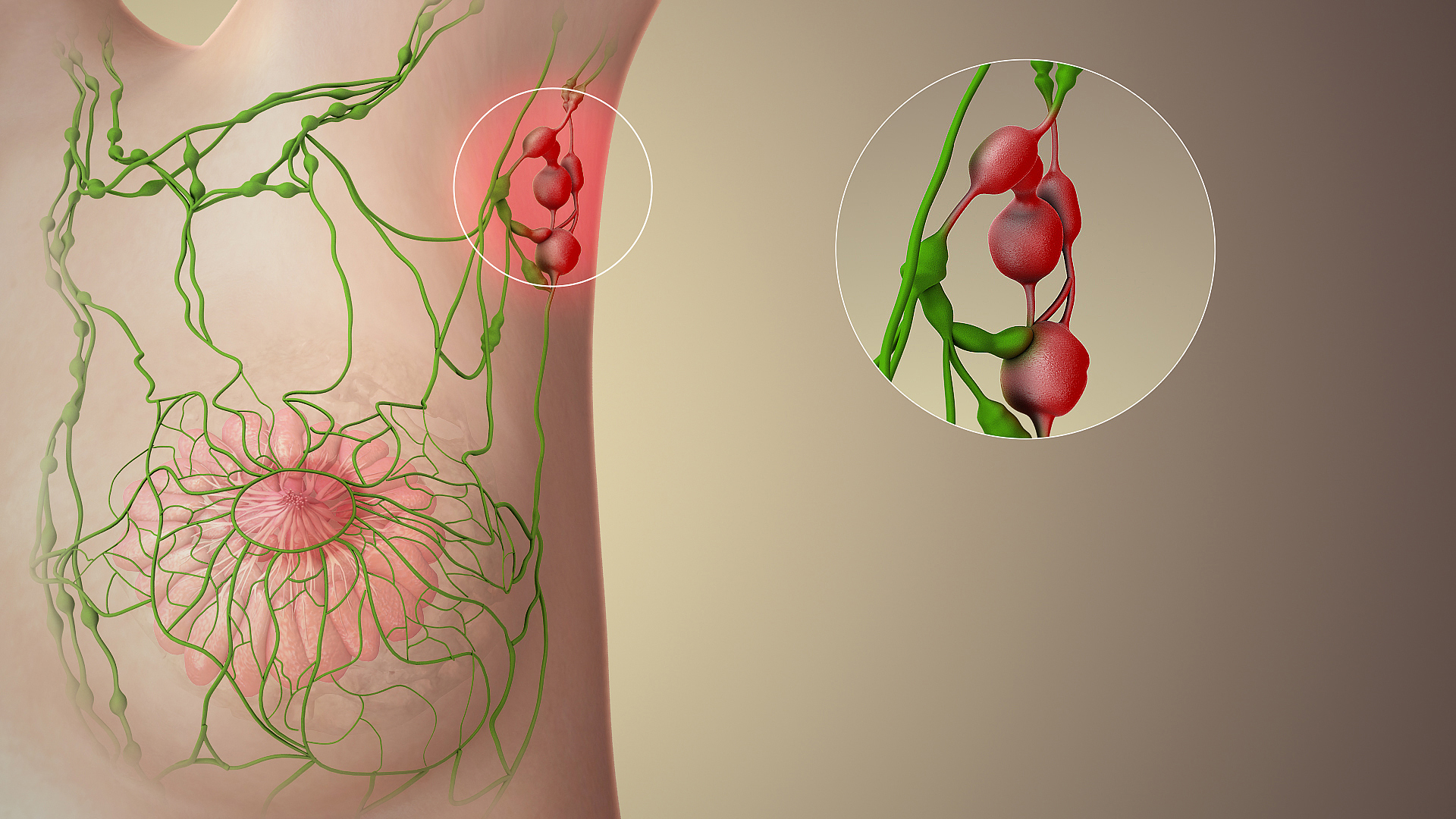 With infectious mononucleosis, usually no specific therapy is required, mainly symptomatic treatment is carried out. If HIV infection is suspected, a thorough laboratory and instrumental examination is carried out and antiretroviral therapy is prescribed, as well as treatment of concomitant infections.
With infectious mononucleosis, usually no specific therapy is required, mainly symptomatic treatment is carried out. If HIV infection is suspected, a thorough laboratory and instrumental examination is carried out and antiretroviral therapy is prescribed, as well as treatment of concomitant infections.
Various immunosuppressive and anti-inflammatory drugs are used to treat autoimmune diseases. Depending on the indications, pulse therapy and intravenous immunoglobulin therapy can be used.
In case of tumor processes, the issue of chemotherapy, radiation therapy, surgical treatment, as well as bone marrow transplantation is being decided.
What to do if the lymph nodes are enlarged?
First of all, the treatment of enlarged lymph nodes is aimed at treating the underlying disease that led to the development of this symptom. It is important to follow the rules of personal hygiene, organize the daily routine and balance the diet. Any treatment is prescribed by a doctor.
It is unacceptable to rub and warm the enlarged lymph node, lubricate it with ointments, try to crush it and treat it with any folk methods without consulting a specialist.
Sources:
- Clinical guidelines “Acute tonsillitis and pharyngitis (Acute tonsillopharyngitis)”. Developed by: National Medical Association of Otorhinolaryngologists, Alliance of Clinical Chemotherapists and Microbiologists, Union of Pediatricians of Russia, Interregional Association for Clinical Microbiology and Antimicrobial Chemotherapy, Euro-Asian Society for Infectious Diseases. – 2021.
- Clinical guidelines “HIV infection in adults”. Developed by: National Association of HIV Prevention, Diagnosis and Treatment Specialists, National Virological Association. – 2020.
- Clinical guidelines “Hodgkin’s lymphoma”. Developed by: National Society of Pediatric Hematologists, Oncologists, Association of Oncologists of Russia, Russian Professional Society of Oncohematologists, National Hematological Society.
 – 2020.
– 2020.
IMPORTANT!
The information in this section should not be used for self-diagnosis or self-treatment. In case of pain or other exacerbation of the disease, only the attending physician should prescribe diagnostic tests. For diagnosis and proper treatment, you should contact your doctor.
For a correct assessment of the results of your analyzes in dynamics, it is preferable to do studies in the same laboratory, since different laboratories may use different research methods and units of measurement to perform the same analyzes.
We determine gynecomastia in men by symptoms, find out the causes and perform treatment at the Constanta Clinic
Gynecomastia in men is a disease based on one- or two-sided enlargement of the mammary glands. The disease can progress both against the background of hormonal disorders, and in relatively healthy men who do not have problems with hormones, but are obese.
There are two forms of gynecomastia in men: physiological and pathological. The physiological variant of breast tissue enlargement occurs in newborns and adolescents, as well as in the elderly, in whose bodies the level of testosterone decreases sharply, and female sex hormones, estrogens, begin to predominate. Gynecomastia in the neonatal period occurs due to the influence of mother’s hormones that enter the child in utero.
The physiological variant of breast tissue enlargement occurs in newborns and adolescents, as well as in the elderly, in whose bodies the level of testosterone decreases sharply, and female sex hormones, estrogens, begin to predominate. Gynecomastia in the neonatal period occurs due to the influence of mother’s hormones that enter the child in utero.
At puberty, many adolescents suffer from bilateral breast enlargement, which usually resolves on its own without any treatment. The problem is associated with changes in the hormonal background, namely, with an increase in the amount of estrogens and their predominance over male sex hormones.
In most cases of gynecomastia in men, there is a bilateral increase in the volume of the mammary glands. At the Constanta Clinic, you can seek qualified medical assistance, make an appointment with experienced specialists who will conduct a comprehensive diagnosis and establish the true causes of the development of the disease. Doctors will develop individual tactics for the treatment of gynecomastia, in accordance with the diagnostic data obtained and the general well-being of the patient. Read more about the treatment of gynecomastia in men in our Clinic.
Doctors will develop individual tactics for the treatment of gynecomastia, in accordance with the diagnostic data obtained and the general well-being of the patient. Read more about the treatment of gynecomastia in men in our Clinic.
Main causes of gynecomastia in men
Normally, the mammary glands in men and adolescents are underdeveloped, formed by a small amount of glandular tissue. With obesity, adipose tissue begins to predominate. Breast volume is due to the influence of female sex hormones – estrogens, as well as prolactin – a pituitary hormone. When, for various reasons, the androgenic index decreases and the amount of estrogen increases, there is an excessive growth of the mammary glands in men according to the female type with a predominance of glandular cells.
Unlike physiological gynecomastia in men, which is considered a passing phenomenon and in most cases is eliminated on its own, the pathological form of the disease is often associated with organic pathology and serious internal disorders.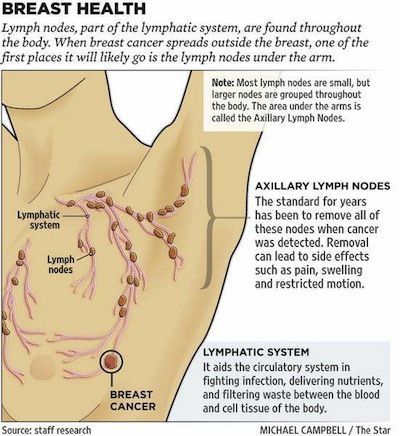 It is often necessary to involve highly specialized specialists in treatment: therapists, endocrinologists, oncologists, and surgeons.
It is often necessary to involve highly specialized specialists in treatment: therapists, endocrinologists, oncologists, and surgeons.
The main causes of true pathological gynecomastia:
- a similar condition is typical for neoplasms of the pituitary gland and testicles, primary hypogonadism, prostate adenoma and other hormonally active tumors;
- increase in the amount of prolactin – increased secretion is associated with neoplasms of the pituitary gland and a lack of thyroid hormones;
- treatment with drugs that stimulate the synthesis of estrogen and prolactin;
- taking steroids;
- infectious and inflammatory processes, immunodeficiency states;
- chronic intoxication;
- overweight;
- diseases of the liver and kidneys;
- diseases that are accompanied by metabolic disorders and dysfunction of the endocrine glands.
Drug dependence has an extremely unfavorable effect on the state of the liver and mammary glands. Potent drugs, especially of the opiate group, increase the synthesis of prolactin, disrupt the functional abilities of the liver, disrupt the course of metabolic reactions, change the state of the gonads and reduce the amount of testosterone produced. All this increases the synthesis of female sex hormones and leads to the development of gynecomastia.
Potent drugs, especially of the opiate group, increase the synthesis of prolactin, disrupt the functional abilities of the liver, disrupt the course of metabolic reactions, change the state of the gonads and reduce the amount of testosterone produced. All this increases the synthesis of female sex hormones and leads to the development of gynecomastia.
Main symptoms of gynecomastia
The main symptom of gynecomastia is the overgrowth of the mammary glands. As a rule, in men, an increase in predominantly glandular tissue is observed. With an increase in the amount of adipose tissue in the chest area, specialists diagnose pseudogynecomastia. In addition to the appearance of mammary glands that are not characteristic of the male constitution, other signs of the disease may be present:
- abnormal discharge from the nipples;
- pain in the chest;
- nipple sensitivity;
- induration of breast tissue;
- Discomfort when rubbing the chest against clothing.

If abnormal growth of the mammary glands is detected, it is necessary to contact specialists as soon as possible. Only doctors, having wide diagnostic and therapeutic capabilities, can make an accurate diagnosis and choose an effective treatment regimen for gynecomastia in a man. Specialists are especially wary of a unilateral enlargement of the mammary gland, which can be observed with the development of a malignant pathology, as well as the appearance of bloody discharge from the nipple and suspicious seals. Sometimes, against the background of male gynecomastia, the axillary lymph nodes increase, which can also be considered an alarming symptom that requires a doctor’s consultation and a detailed examination of the breast and surrounding tissues.
Gynecomastia examination
To make a preliminary diagnosis, it is enough for the doctor to conduct a standard examination and palpation of the breast tissue and adjacent lymph nodes. But an accurate diagnosis of gynecomastia is carried out only on the basis of the results of modern research. Ultrasound is considered the main method of diagnosis. Specialists conduct an ultrasound examination of the mammary glands, organs of the scrotum, axillary lymph nodes.
Ultrasound is considered the main method of diagnosis. Specialists conduct an ultrasound examination of the mammary glands, organs of the scrotum, axillary lymph nodes.
Laboratory studies are actively used, which include the determination of the level of testosterone, hCG, estradiol and prolactin, as well as other hormones (if indicated). If you suspect the development of a malignant tumor, a biopsy of the mammary glands is prescribed. Additionally, magnetic resonance imaging and computed tomography of internal organs are used.
In the CONSTANTA Clinic, patients have access to many types of modern diagnostic and laboratory tests, which allow them to obtain the most reliable information about the patient’s condition and the work of all his internal organs, including the endocrine glands. We provide professional assistance to men with gynecomastia and provide both symptomatic and surgical treatment.
Gynecomastia is a serious disease that requires an integrated approach and the participation of experienced professionals. Delays in contacting the Clinic or the use of dubious home treatments for gynecomastia in men can lead to the development of serious complications. Our specialists have at their disposal modern therapeutic and surgical methods to combat this disease, which are highly effective and safe. You can discuss treatment options with your doctor. Do not hesitate to ask the specialist questions that interest you. The doctors of the Constanta Clinic are focused on respecting the interests of their patients and the maximum concentration of professional forces on solving the problems of each applicant.
Delays in contacting the Clinic or the use of dubious home treatments for gynecomastia in men can lead to the development of serious complications. Our specialists have at their disposal modern therapeutic and surgical methods to combat this disease, which are highly effective and safe. You can discuss treatment options with your doctor. Do not hesitate to ask the specialist questions that interest you. The doctors of the Constanta Clinic are focused on respecting the interests of their patients and the maximum concentration of professional forces on solving the problems of each applicant.
Gynecomastia and steroids
Taking anabolic steroids often leads to the development of male gynecomastia. Steroid hormones contribute to the excessive formation of female sex hormones, in particular – estradiol. As a result of long-term use of anabolic steroids by athletes, there is a deposition of adipose tissue according to the female type and a bilateral increase in the mammary glands.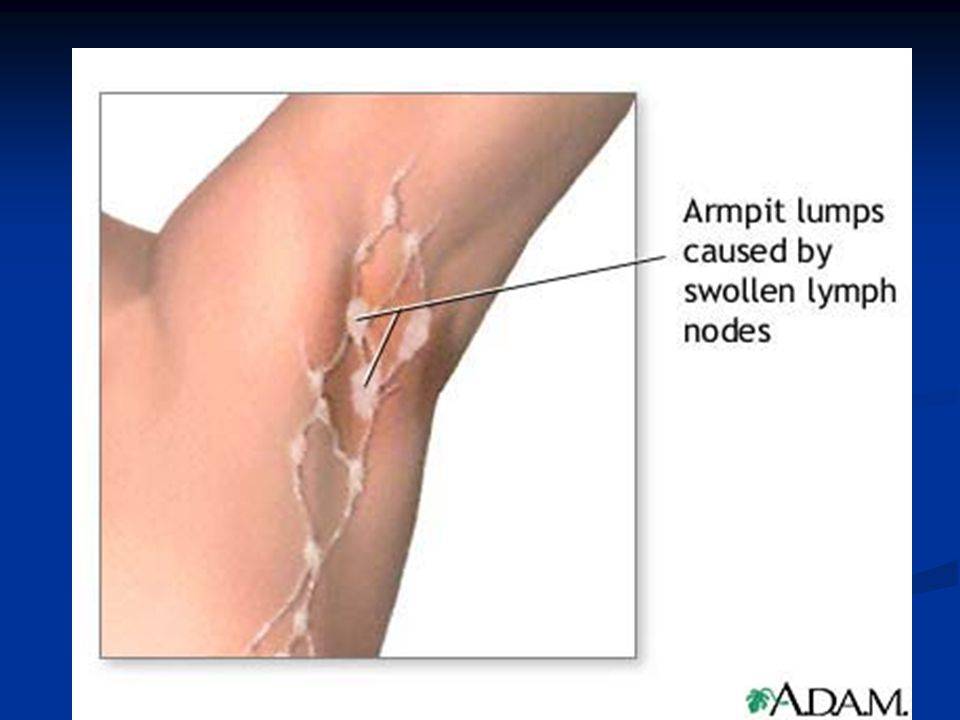 Athletes taking steroids should take care of the prevention of gynecomastia in advance. It consists in taking special drugs that block estrogen receptors. Ideally, an athlete’s career should be built without the use of steroid drugs, which have a detrimental effect not only on hormonal status, but also on the entire male body.
Athletes taking steroids should take care of the prevention of gynecomastia in advance. It consists in taking special drugs that block estrogen receptors. Ideally, an athlete’s career should be built without the use of steroid drugs, which have a detrimental effect not only on hormonal status, but also on the entire male body.
Gynecomastia with endocrine pathologies
Endocrine diseases often cause the development of gynecomastia in men. Various pituitary tumors lead to hyperprolactinemic hypogonadism. In this state, the synthesis of gonadotropins, testicular function are disturbed, spermatogenesis may decrease. As a result, men note a decrease in potency and the disappearance of libido. Adolescents in this state do not have a pronounced expression of secondary sexual characteristics.
Hyperprolactinemia is observed with the growth of prolactinoma, as well as with other pituitary adenomas and the presence of hormonally inactive adenomas. In childhood, gynecomastia can occur with hyperthyroidism. Thyroid hormones increase estradiol levels. To get rid of gynecomastia provoked by hyperthyroidism, it is first necessary to treat the underlying disease.
Thyroid hormones increase estradiol levels. To get rid of gynecomastia provoked by hyperthyroidism, it is first necessary to treat the underlying disease.
Gynecomastia and genetic pathologies
Genetic anomalies often underlie the development of gynecomastia. Most often, excessive growth of breast tissue is diagnosed in men with Klinefelter syndrome, in which an extra X chromosome is detected in the cells. These men are more sensitive to estrogen. With this disease, hyperprolactinemia occurs, which also enhances the manifestations of gynecomastia.
In Klinefelter’s syndrome, puberty may occur on time, but puberty is often delayed. Patients are predominately tall and have abnormal physiques, in which the lower torso is significantly larger than the upper. The size of the testicles is reduced. With chromosomal abnormalities, the treatment of gynecomastia is predominantly surgical. The nodular form of the disease requires constant medical supervision and a biopsy after surgery or at the diagnostic stage.
Reifenstein’s syndrome occurs with increased estrogen synthesis and the development of gynecomastia. Symptoms of the disease appear, as a rule, during adolescence, when hormonal changes in the body occur. At the same time, specialists identify signs of underdevelopment of the genital organs. Such patients require hormone replacement therapy with an individual selection of the dosage of funds.
True hermaphroditism also occurs with symptoms of gynecomastia. The patient usually learns about his problem at the beginning of the puberty, when the active growth of the mammary glands begins and other signs of the formation of a figure according to the female type appear.
Gynecomastia and liver diseases
Some pathologies of the liver can lead to the development of gynecomastia. Important metabolic processes take place in the liver tissues. This organ is responsible for the metabolism of steroids. Therefore, in case of violation of its work, with the development of hepatitis, alcoholic cirrhosis, the risk of growth of the mammary glands in men increases. Specific renal enzymes lead to the destruction of prolactin and gonadotropins, as well as to a slowdown in the release of body tissues from metabolic products. All this often leads to an increase in the level of prolactin and estrogen, causing the progression of gynecomastia.
Specific renal enzymes lead to the destruction of prolactin and gonadotropins, as well as to a slowdown in the release of body tissues from metabolic products. All this often leads to an increase in the level of prolactin and estrogen, causing the progression of gynecomastia.
Gynecomastia and neoplasms of the mammary glands
Tumors in the mammary glands are often mistaken for true gynecomastia. The process is most often unilateral, but sometimes neoplasms cover two mammary glands at once. To the touch, the tumor has a dense texture, usually soldered to neighboring tissues and is distinguished by fuzzy contours. With neoplasms of the breast in men, sanious discharge from the nipples may appear, sometimes the lymph nodes in the armpit are noticeably enlarged.
When a neoplasm is detected, specialists refer the patient to mammography, ultrasound, MRI and prescribe a biopsy, the results of which can determine the nature of the tumor and make appropriate predictions for the future.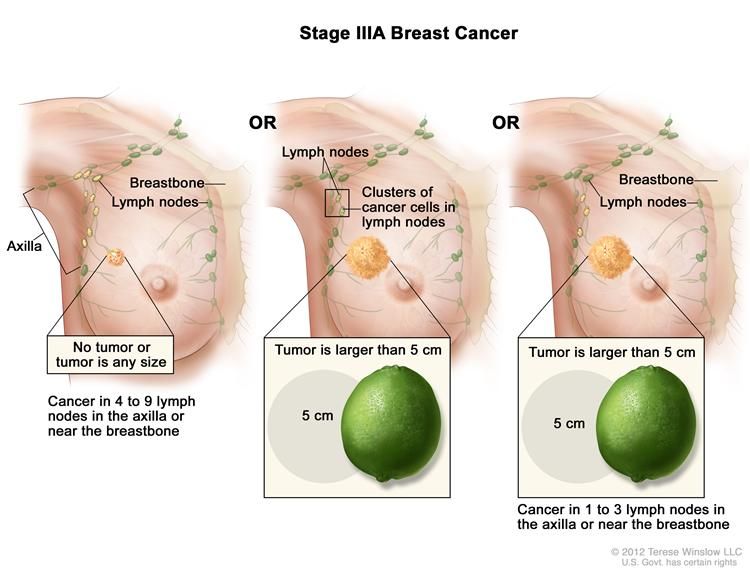
Iatrogenic gynecomastia
Iatrogenic gynecomastia occurs while taking certain medications. The risk group includes patients who undergo hormonal treatment with estrogens, as well as other hormones (gonadotropins, glucocorticoids). Against the background of hypogonadism, specialists often prescribe testosterone, which is toxic to the liver and can cause signs of temporary gynecomastia. Cardiac glycosides have a similar effect, stimulating the active production of steroids and disrupting the functional abilities of the testicles.
Drug-induced gynecomastia is most often a reversible process that can be stopped after the drug is discontinued, which provoked excessive growth of the mammary glands. But it is necessary to stop the drugs as soon as possible. If you do not pay attention to the appearance of gynecomastia on the background of drug therapy for 6-12 months or more, irreversible fibrotic processes will begin to occur in the tissues of the mammary gland. The advanced form of the disease is mainly subject to surgical treatment.
The advanced form of the disease is mainly subject to surgical treatment.
Principles of treatment of gynecomastia
Treatment of gynecomastia in men can be therapeutic and surgical. The physiological form of the disease in adolescents and newborns usually disappears spontaneously and does not require the use of specific therapy. According to indications, specialists can carry out hormonal correction with drugs that reduce the level of female hormones. But any drugs used to treat gynecomastia in men are prescribed only by qualified specialists who are familiar with your clinical case. Self-administration of medications, without studying the hormonal status and diagnostic results, can lead to adverse health effects and an increase in the symptoms of the underlying disease.
Conservative therapy for gynecomastia is the appointment of hormonal agents containing testosterone. Such drugs are effective in the initial period of the development of the disease, in the first months, when cicatricial changes and other complications that require surgery have not yet occurred.
A severe form of gynecomastia is difficult to treat conservatively. It is extremely important to seek medical help in a timely manner, when it is possible to achieve high efficiency of drug therapy. If the doctor recommends surgical treatment, do not refuse it. Today, men with gynecomastia get the opportunity to undergo minimally invasive surgical interventions, after which there are no rough keloid scars in the mammary glands. It is these operations that are carried out at the Constanta Clinic. Excess tissue is removed through the subareolar approach or using an endoscopic method with access from the armpit. In the second case, absolutely no scars remain on the skin of the chest.
With false gynecomastia, liposuction is indicated. The surgeon sucks out excess fat through small punctures in the skin or removes it in a classic surgical way. The operation is performed under general or local anesthesia, depending on the patient’s condition and his wishes.
Preparation for surgical treatment of gynecomastia in men
No complex preparatory activities are carried out.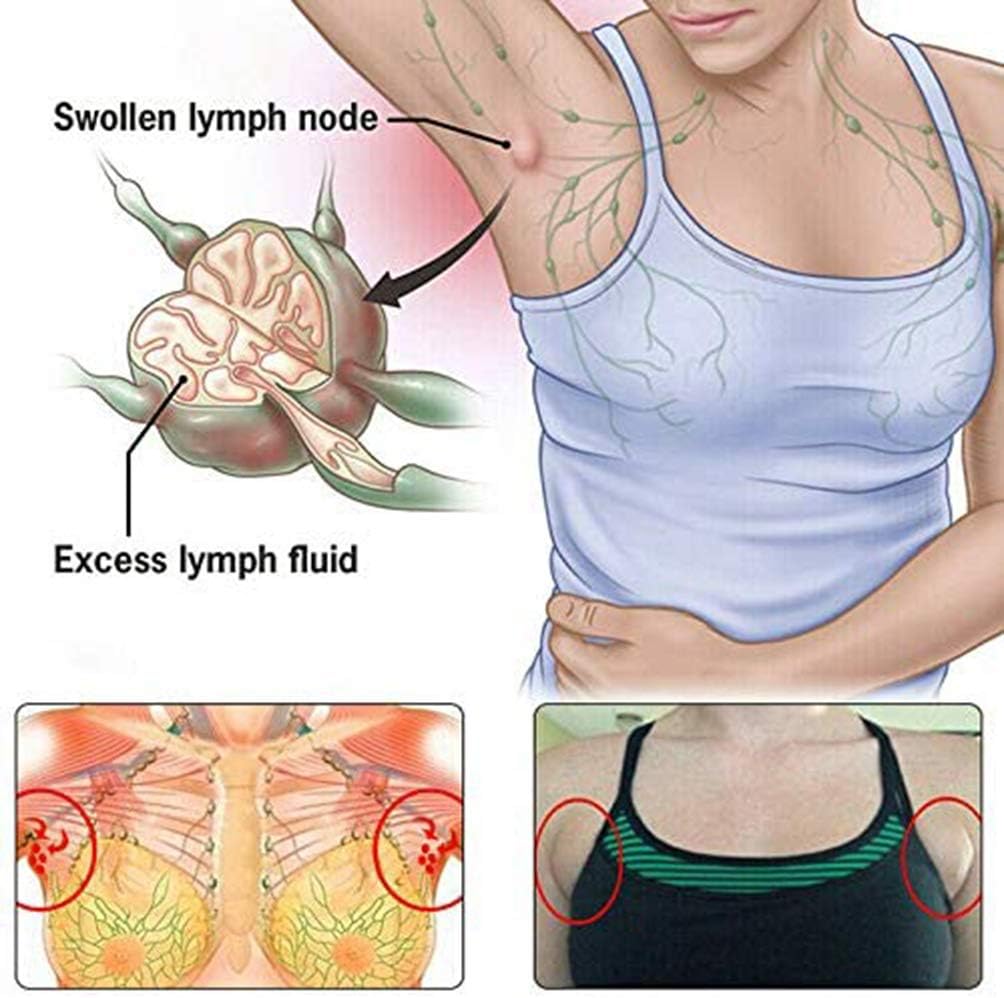 The patient undergoes a comprehensive examination, which allows assessing his state of health and choosing the appropriate tactics for surgical intervention. Based on the diagnostic data, the doctor makes predictions for the future and selects the correct treatment regimen that prevents the development of complications, both during the operation and in the postoperative period.
The patient undergoes a comprehensive examination, which allows assessing his state of health and choosing the appropriate tactics for surgical intervention. Based on the diagnostic data, the doctor makes predictions for the future and selects the correct treatment regimen that prevents the development of complications, both during the operation and in the postoperative period.
The operation is carried out on an empty stomach. The doctor will tell you in detail about the features of the surgical stage and the recovery period. You must strictly follow the doctor’s prescriptions, in case of any questions or deterioration of health, it is recommended to contact your doctor without delay.
Recovery period after surgical treatment of gynecomastia
In most cases, surgical treatment of gynecomastia in men proceeds without complications. As a rule, long-term hospitalization is not required. The patient is discharged home, giving detailed recommendations on the rules of conduct and prevention of complications.:max_bytes(150000):strip_icc()/armpitpainfinal-01-5c86a51446e0fb000133653f.png)


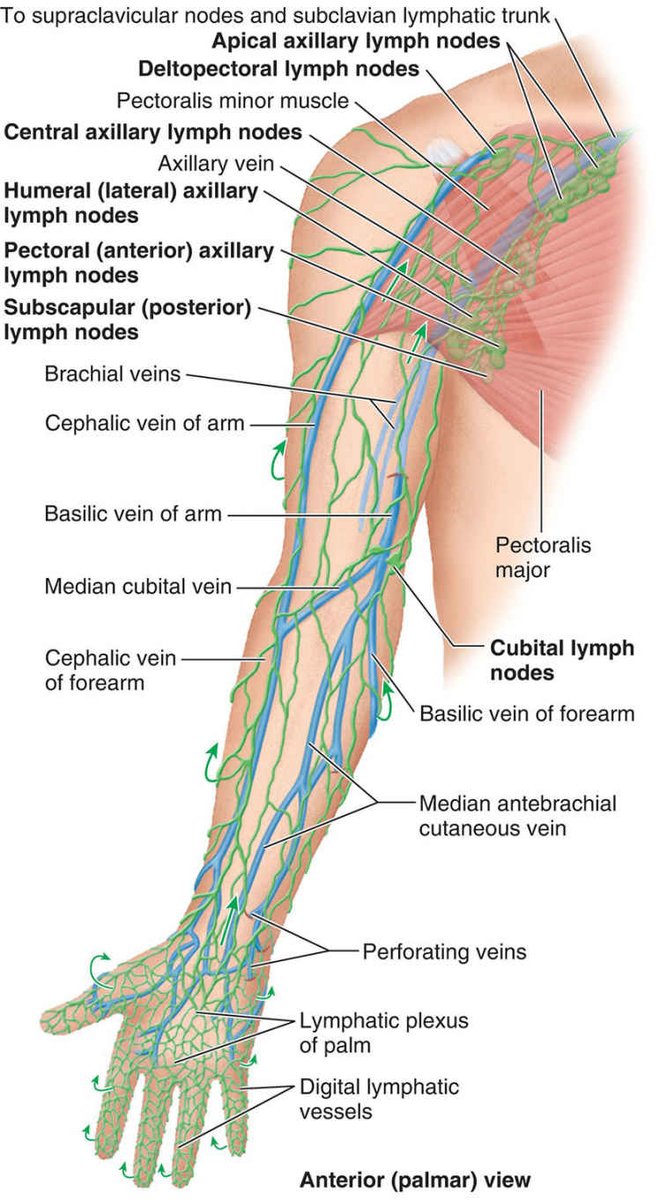
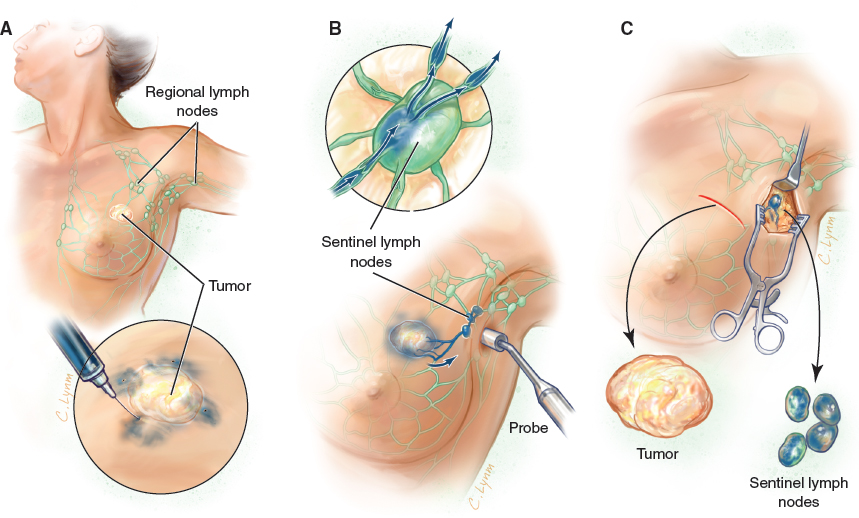 – 2020.
– 2020.